

 Faculty Recruiting Seminar
Faculty Recruiting Seminar
Monday, December 16, 3:30-4:30pm, WEL 2.122
Postdoctoral Researcher
Harvard University
PhD, Univ. of Pennsylvania, 2021
Abstract: Electrochemistry is a growing approach for chemical transformation and renewable energy storage. Achieving high efficiency and selectivity in electrochemical reactions requires effective management of both electron transfer and ion transport processes. In this presentation, I will first introduce ion transport within bipolar membranes (BPMs), a promising strategy for creating asymmetric pH conditions in a single electrochemical device. We developed an operando electrochemical technique to probe the microenvironment at the BPM/cathode interface in a CO2 electrolyzer, identifying the first electron transfer as the rate-determining step. Next, we explored BPMs in a reversible acid-base redox flow battery, where we uncovered the critical role of interfacial catalysis and electric field. Finally, using time-resolved infrared spectroscopy, we investigated the electron transfer pathway and kinetics during the photo-oxidation of carbonate species in nonaqueous environments.
Organic Seminar
Friday, December 13, 3:30-4:30pm, WEL 2.122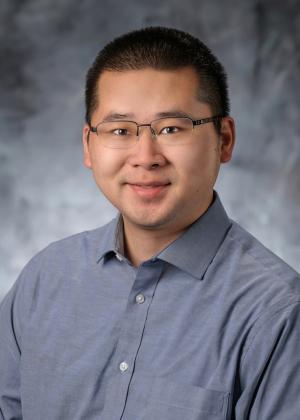
Assistant Professor
UC Santa Barbara
Abstract: Radical reactions have enjoyed widespread applications in both small molecule and macromolecule synthesis. However, it remains challenging to control the stereochemistry of radical transformations and to discover novel modes of radical catalysis which are not known in either organic chemistry or biochemistry. Combining synthetic chemistry, enzymology and protein engineering, our group advanced two new biocatalytic strategies for stereoselective free radical processes. First, by capitalizing on the innateredoxproperties of first-row transition-metal cofactors, we repurposed and evolved natural metalloproteins to catalyze unnatural radical reactions in a stereocontrolled fashion. Through a metalloenzyme-catalyzed halogen atom transfer mechanism (XAT, X = F, Cl, Br and I), a range of radical C–C, C–Br, and C–F bond forming reactions proceeded with excellent total turnover numbers (up to 20,000) and outstanding stereocontrol. Second, by merging visible light photoredox catalysis and biocatalysis, we advanced a novel mode of pyridoxal radical biocatalysis which is new to both chemistry and biology. Synergistic photobiocatalysis allowed us to repurpose structurally and functionally diverse pyridoxal phosphate (PLP)-dependent enzymes as radical enzymes, leading to novel radical PLP enzymology. Pyridoxal radical biocatalysis provides convergent, stereoselective, and protecting-group-free access to a range of useful non-canonical amino acids, including those bearing a stereochemical triad and/or tetrasubstituted stereocenters which remained difficult to prepare by other chemical and biocatalytic means. Furthermore, we demonstrate that the exploitation of biocatalyst-photocatalyst synergy affords a new paradigm to design and develop stereoselective intermolecular radical reactions with synthetic utility.
Faculty Recruiting Seminar
Wednesday, December 11, 3:30-4:30pm, WEL 2.122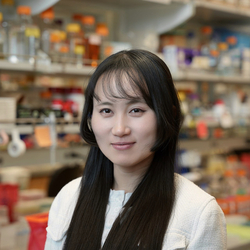
Postdoctoral Researcher
University of Washington
PhD, Univ. of Illinois Urbana Champaign (van der Donk)
Abstract: A general computational method to build small molecule-protein interfaces from scratch would be widely useful for many challenges, including ligand binder and sensor design, enzyme engineering. Yet, designing proteins to bind small molecules is extremely challenging because the problem requires a highly accurate sampling in a gigantic sampling space. In this talk, I will go through how we approach the small molecule binding problem through building machine learning-based protein design methods and successfully demonstrating their robustness through design binders to various ligands, including polar and flexible ones. Using the designed binders, I further developed a general method to turn binders into sensors through building chemically induced oligomerization systems. I will also project how our methods can revolutionize enzyme engineering by significantly increasing our screening capability and enabling structural large manipulations that were impossible before on enzyme redesign.
Analytical & Physical Seminar
Thursday, November 21, 3:30-4:30pm, WEL 2.122
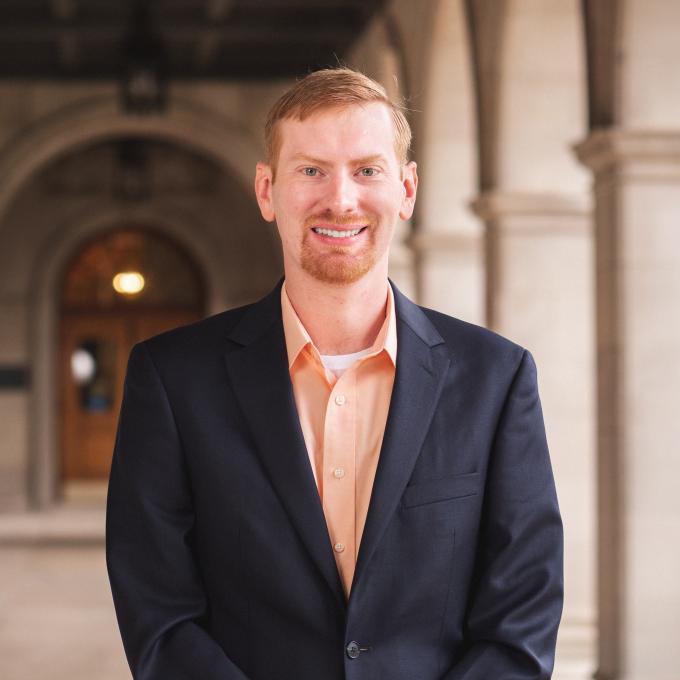
Assistant Professor
Washington University (St. Louis)
Abstract: H-bonding interactions and proton transfer processes play central roles throughout chemistry and biology. Spectroscopic studies that directly probe strong H-bonds and proton transfer reactions, however, remain a formidable experimental challenge. We aim to characterize vibrational spectral signatures and dynamics of strong H-bonds by complementing high-resolution gas-phase techniques (cryogenic ion spectroscopy) with ultrafast time-resolved solution-phase experiments (transient absorption, 2D IR). First, we report gas-phase studies on a series of proton-coupled electron transfer (PCET) model systems, which exhibit extremely broad shared H atom stretch transitions. Computational modeling reveals a unique spectral mechanism arising from significant anharmonic coupling of the H atom degrees of freedom to nearly three dozen normal mode coordinates. Next, solution-phase studies investigating the intramolecular H-bond in a series of βdiketones reveals surprisingly long-lived and isotope-dependent orientational dynamics. The orientational dynamics are attributed to activated H atom transfer dynamics driven by internal structural rearrangements. Finally, exciting progress on a novel experimental platform that combines ultrafast IR spectroscopies with cryogenic ion techniques for the acquisition of multidimensional and time-resolved spectra of isolated ion ensembles will be discussed.
Organic Seminar
Friday, November 15, 3:30-4:30pm, WEL 2.122
Professor
Emory University
Abstract: This talk will focus on our recent efforts in function and efficiency-driven total synthesis of medicinally important natural products. The target molecules include macrolides, alkaloids, and polycyclic diterpenoids. Novel and enabling synthetic strategies and methodologies toward these target molecules will be highlighted. Biological evaluation and target identification of the selected natural products and their analogs will be discussed as well. These biological endeavors have led us to the exciting territories of targeting the previously undruggable disease proteins via small-molecule inhibition and targeted protein degradation. Overall, this talk will emphasize how we use natural product total synthesis to achieve chemistry innovation and biological discovery.
Analytical & Physical Seminar
Thursday, November 14, 3:30-4:30pm, WEL 2.122

Material Measurement Laboratory, NIST
Abstract: Since the beginning of the microelectronics era ongoing miniaturization of transistors has been accompanied by the development of ever more intricate interconnects. Presently these range from nanoscale on-chip wiring to 3D TSV for chip stacking along with related structures for advanced packaging and printed circuit board applications. Electrodeposition has been a key process in the void-free fabrication of recessed patterned Cu interconnects by virtue of surfactant-mediated superconformal film growth. This lecture will detail how the combination of electroanalytical kinetics, metallurgical analysis, and in situ electrochemical surface science measurements can be used to reveal the mechanisms associated with this unusual deposition mode. The generality of the findings to the deposition of other metals and applications will also be detailed.
Organic Seminar
Friday, November 8, 3:30-4:30pm, WEL 2.122
Senior Lecturer
Queensland University of Technology
Abstract: Polymers, plastics, and composite materials are highly desirable for future technologies, owing to their highly functional molecular design, lightweight, and precisely tuneable properties. My research group aims to address critical challenges in healthcare, by using controlled synthetic techniques, to design organic probes and polymers with specific physicochemical properties, to enable smart functionality in biological environments. In this presentation, I will give an overview of recent projects looking at the interactions between organic materials and radiant energy; from UV in sunlight to high energy X-ray radiation. The radiant energy drives changes in the materials, allowing for the creation of smart devices to protect people from the sun, enable photodynamic therapy, or to improve delivery of adjuvant therapies for radiotherapy. I will also discuss a new project looking at how polymers can target lipid membranes, as a novel target for broad spectrum antivirals. I will introduce high-throughput synthesis of a large library of antiviral polymers, and how we are assessing their activity though data analytics approaches and in-depth chemical characterization.
Analytical & Physical Seminar
Thursday, November 7, 3:30-4:30pm, WEL 2.122
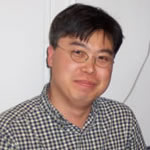
Professor
Texas A&M University
Abstract: Imposing strong quantum confinement in lead halide perovskite quantum dots enhances the electronic interactions of charge carriers and dopant spin within the quantum dot, and also promotes the delocalization of the exciton among the quantum dots in the close-packed quantum dot ensemble. Enhancing intra-quantum dot exciton-dopant interaction and inter-quantum dot exciton coupling in strong confinement regime can enhance the capability of perovskite quantum dots as the source of the Auger-upconverted hot electrons and cooperative photon emission as superradiance. Here, I will discuss (i) the generation of hot electrons via Auger upconversion involving long-lived dopant state in strongly quantum-confined cesium lead bromide (CsPbBr3) quantum dots doped with Mn2+ and (ii) the cooperativephoton emission as the superradiance from the electronically coupled quantum dots in superlattice. Strong confinement that enhances exciton-dopant interaction proved to enhance the effectiveness of hot electron generation via Auger process that could also take advantage of accessible long-lived dark exciton state at low temperature for upconversion process. The superlattice of CsPbBr3 quantum dots, where the electronic coupling is enhanced by imposing strong quantum confinement and reducing facet-to-facet distance, produced the superradiance that exhibits linear polarization indicating the ability to introduce anisotropic electronic coupling in the superlattice formed from CsPbBr3 quantum dots.
Richard Lagow Excellence Fund in Inorganic Chemistry Seminar
Wednesday, November 6, 3:30-4:30pm, WEL 2.122

Professor Emeritus
UC Santa Barbara; University of Cambridge
Abstract: Metal-Organic Framework materials for separation processes in the Energy Transition need to be earth-abundant, scalable, and highly selective. The perovskite formates satisfy all of these requirements. The classical ABX3 perovskite formates such as [(CH3)2NH2]Zn(HCOO)3 are notable for their exciting ferroelectric and multiferroic behaviour, which we have studied since 2008. By contrast, the ReO3-type MIII(HCOO)3 formates (M = Al, Fe etc) are an emerging class of metal-organic framework materials that show exciting potential for CO2 capture from flue gases and CO2/hydrocarbon mixtures, non-cryogenic O2/N2 air separation, and hydrogen storage. Recent developments and future opportunities in these areas will be discussed.
Analytical & Physical Seminar
Thursday, October 31, 3:30-4:30pm, WEL 2.122

Assistant Professor
Purdue University
Abstract: Mapping the chemical composition of biological systems is crucial for understanding complex biological functions and pathological transitions. In recent decades, optical microscopy has enabled high-resolution mapping of both physical dynamics and chemical distributions within these systems. Coherent Raman scattering (CRS) microscopy, in particular, has emerged as a powerful tool for visualizing chemical compositions, especially lipids and pharmaceuticals, in biological samples. The first part of this presentation will highlight recent advancements in CRS microscopy achieved by my research group. We will also explore how CRS microscopy, in conjunction with fluorescence microscopy, has been applied to study cellular responses to various stressors, with a specific focus on how cancer cells adapt their lipid metabolism and cytoskeletal organization under hypoxic conditions. The second part of the presentation will introduce a cutting-edge technology known as Real-Time Precision Opto-Control (RPOC), which enables site-specific, chemically selective control of subcellular processes with submicron accuracy. RPOC represents a breakthrough in optical control, offering unprecedented precision, speed, selectivity, and flexibility. This technology unlocks new possibilities in biological and medical research, such as generating reactive oxygen species in targeted organelles, activating drugs in specific cellular compartments, photo-uncaging small molecules with extreme precision, regulating cell division and viability, and selectively eliminating unwanted cells from a population. I will discuss the concept, history, and recent advances in RPOC, showcasing its broad applications in biological and medical science through specific examples.
Organic Seminar
Monday, October 28, 3:30-4:30pm, WEL 2.122
Professor
University of Pittsburgh
Abstract: Due to limited mechanistic insights and the complexity of catalyst–substrate interactions, catalyst design and optimization in transition metal catalysis and biocatalysis are often based on chemical intuition and experimental trial-and-error. I will discuss our recent efforts towards new computational approaches to understand and predict the reactivity and selectivity of various C–H bond and olefin functionalization reactions, catalyzed by transition metal complexes and engineered metalloenzymes. We use computational tools to investigate reaction mechanisms and steric, electronic, dispersion, and flexibility effects of the catalyst. Although steric and electronic effects have long been used to control organic reaction reactivity and selectivity, other factors, such as non-covalent interactions and catalyst flexibility and rigidity, are poorly understood and thus rarely leveraged when designing new reactions. We utilized energy decomposition analysis (EDA) methods to quantitatively analyze different types of covalent and non-covalent interactions between the catalyst and the substrate. These studies provided a straightforward way to identify the dominant factor controlling reactivity and selectivity. Recently, we applied these computational approaches to conformationally flexible catalyst systems, including transition metal catalysts with conformationally flexible and hemilabile ligands, asymmetric ion-pairing catalysis, organic reactions in solution, as well as stereoselective biocatalytic reactions involving short-lived radical intermediates. In collaborations with various synthetic experimental groups, we are exploring how the theoretical insights, in particular, quantitative descriptions of noncovalent interactions and catalyst flexibility effects, can be directly employed to guide rational catalyst design and discovery.
Analytical & Physical Seminar
Thursday, October 24, 3:30-4:30pm, WEL 2.122
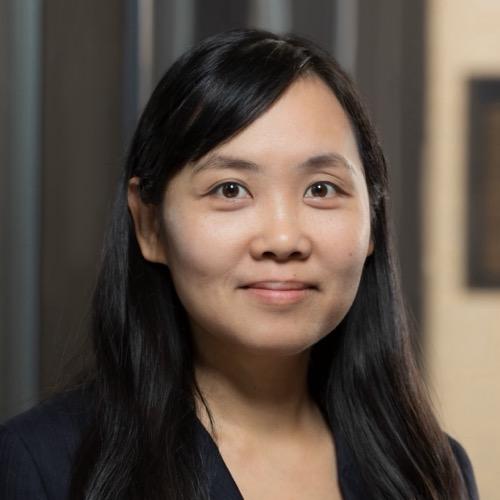
Assistant Professor
UT Austin College of Pharmacy
Abstract: In stark contrast to the textbook view that receptor tyrosine kinase signaling is mediated from the cell membrane, we show these cancer-causing proteins can initiate biochemical reactions from de-novo assembly of biomolecular condensates inside the cells. The finding serves as a paradigm shift in how we diagnose and treat biomolecular condensates mediated cancers.
Organic / ChemBio Seminar
Monday, October 7, 12:00-1:00pm, NHB 1.720
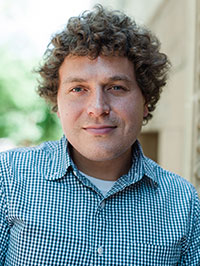
Professor
Texas A&M
Abstract: Despite enormous promise, molecular probes and other devices constructed from nucleic acids remain poorly suited for application in biological environments. In particular, exogenously delivered DNA and RNA are susceptible to degradation by cellular nucleases and off-target interactions with endogenous macromolecules, both of which impede performance. Our laboratory is pursuing the use of L-(deoxy)ribose nucleic acids (L-DNA and L-RNA), which are mirror images (i.e., enantiomers) of natural D-nucleotides, as a potential solution to this problem. As enantiomers, D- and L-oligonucleotides are identical in terms of their physical and chemical properties, yet L-oligonucleotides are more orthogonal to the stereospecific environment of native biology. Consequently, L-oligonucleotide-based technologies evade typical biological interference, including nuclease degradation, thereby overcoming a key barrier to employing nucleic acids-based technologies in living systems. In this presentation, I will discuss a unique chimeric D/L-DNA architecture for constructing intracellular probes of DNA repair, which are being used to study DNA repair biology and develop therapies targeting repair enzymes. I will also discuss our recent efforts to characterize the intracellular behavior of L-oligonucleotides and to establish an L-oligonucleotide “interactome”, which is expected to have a broad impact on how future L-oligonucleotide-based technologies are designed and applied.
Organic Seminar
Anslyn, Iverson, Sessler Lectureship in Chemistry
Friday, October 4, 3:30-4:30pm, WEL 2.122
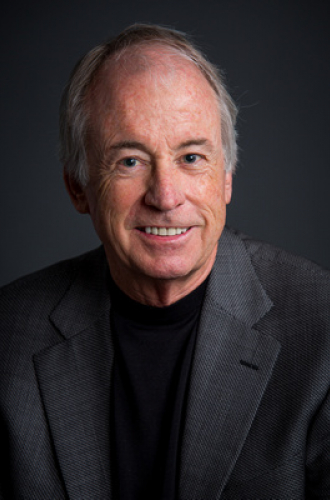
Professor Emeritus
UT Austin
Abstract: Scientific explorations are often characterized by unanticipated twists and turns that may lead in directions that never could have been predicted. What we discover depends upon decisions we make when we encounter the unexpected. This lecture chronicles one such journey that began with a challenge encountered in natural product synthesis and unfolded to addressing unmet medical needs in neuroscience over more than thirty years. The story began with addressing a challenge encountered while planning a concise route to a key intermediate in a synthesis of an indole alkaloid. Solving this problem resulted in the serendipitous discovery of the vinylogous Mannich reaction, which we subsequently used as a key step in the syntheses of numerous alkaloids. Generalizing the solution to that initial problem also inspired a major program directed toward the design and synthesis of diverse collections of nitrogen heterocycles that were tested broadly for biological activity. Screening a curated set of these compounds against proteins in the central nervous system led to finding some that were selective for the sigma 2 receptor (s2R). With scant knowledge of its function, we posited that small molecules that bound to s2R would be neuroprotective. This bold hypothesis launched a new venture in which we prepared analogs of those initial hits, identified s2R as transmembrane protein 97 (TMEM97), and explored the effects of modulating s2R/TMEM97 in cellular and animal models of several neurological conditions, including Alzheimer's disease, traumatic brain injury, retinal degeneration, Huntington's disease, alcohol use disorder, and neuropathic pain. Translational and mechanistic studies are in progress.
Analytical & Physical / ChemBio Seminar
Thursday, September 26, 3:30-4:30pm, WEL 2.122

Professor
University of Minnesota
Abstract: By 2050, the global human population is expected to reach nearly 10 billion; feeding this population will be a challenge. In parallel, anthropogenic pollutants such as PFAS compromise the food-growing environment as they are found ubiquitously in soil and water. This talk will focus on designing nanomaterials to interact productively with plants both to enhance crop yield and remediate PFAS. Engineered nanomaterials thoughtfully designed and synthesized from earth-abundant elements can be taken up by plants. In some cases, the nanoparticles will transform to release molecules that plants can use to enhance their immune and physical response to pest and disease, producing more and healthier food. In other cases, the nanoparticles will interact with PFAS molecules in soil or water and then be taken up by the plant to facilitate bioaccumulation. Combined with other exciting technologies in development, nanoparticles have great potential to ameliorate our global food crisis and pollution challenges.
Jonathan Sessler Symposium
Monday, September 23, 3:30-4:30pm, WEL 2.122
Professor
Hebrew University of Jerusalem
Abstract: Although Pt drugs in clinical use, cisplatin, carboplatin and oxaliplatin are square planar Pt(II) complexes, octahedral Pt(IV) complexes have attracted a lot of attention since their chemical properties allow for great flexibility in design of novel drugs. Pt(IV) complexes are octahedral complexes that are kinetically more inert than their Pt(II) precursors and can be administered orally. Pt(IV) complexes act as prodrugs that are activated inside the cancer cells by reductive elimination resulting in the concurrent release the two axial ligands, and the Pt(II) drug. The main advantage of the “dual action” drugs is the simultaneous release of two anti-proliferative agents that act by different mechanisms of action and attack different cellular targets thereby increasing the chances of overcoming resistance to a single drug. In this presentation we will discuss the design, synthesis, the in vitro and in vivo cytotoxicity and tumor growth inhibition of dual targeting prodrugs that deliver two drugs to the tumor in comparison with the individual drugs and their co-administration. We will describe behavioral studies designed to explore the differences between the ability of Pt(IV) prodrugs and cisplatin and oxaliplatin to induce peripheral neuropathy in mice that affects their sensitivity to heat, cold and mechanical pressure.
Jonathan Sessler Symposium
Monday, September 23, 3:30-4:30pm, WEL 2.122![]()
Professor
Beijing Normal University
Abstract: Recent advancements in carbon-rich molecules with irreversible and reversible atropisomer interconversion have led to the development of novel supramolecular self-assembly systems. These systems utilize heat and/or chemical reactions to induce structural changes, resulting in time-dependent solid-state molecular motion and color tuning in host-guest systems, which are influenced by organic solvent environments. In particular, these supramolecular assemblies exhibit emergent behavior, such as the formation of multi-component capsules capable of capturing and protecting iodine or bromine. Additionally, thermally-induced atropisomerism plays a crucial role in promoting the construction of metal-organic cages and pseudo-rotaxanes, expanding the utility of these molecules in complex assembly processes. In parallel, our research has focused on the introduction of pore defects into nano-scale carbon-rich molecules, such as π-extended helicenes, by incorporating carbon-rich macrocycle moieties. These modifications have resulted in significant enhancements and novel properties, including excellent circularly polarized luminescence (CPL) properties, dual-state emission (DSE) and dual-state CPL, expanding the range of potential applications in molecular sensing and optical materials.
Jonathan Sessler Symposium
Monday, September 23, 3:30-4:30pm, WEL 2.122
Professor
Kyoto University
Abstract: Porphyrins and expanded porphyrins have been often synthesized by condensation reactions of pyrroles and aldehydes. Our group at Hunan Normal University has explored non-condensation routes to new porphyrinoids. One is aromatic nucleophilic substitution reaction between bromo-oligopyrrins with tripyrranes and the other is Friedel-Crafts type cyclization between bromo-oligopyrrins with oligo-pyrromethanes. The synthetic details will be reported.
Analytical & Physical Seminar
Thursday, September 19, 3:30-4:30pm, WEL 2.122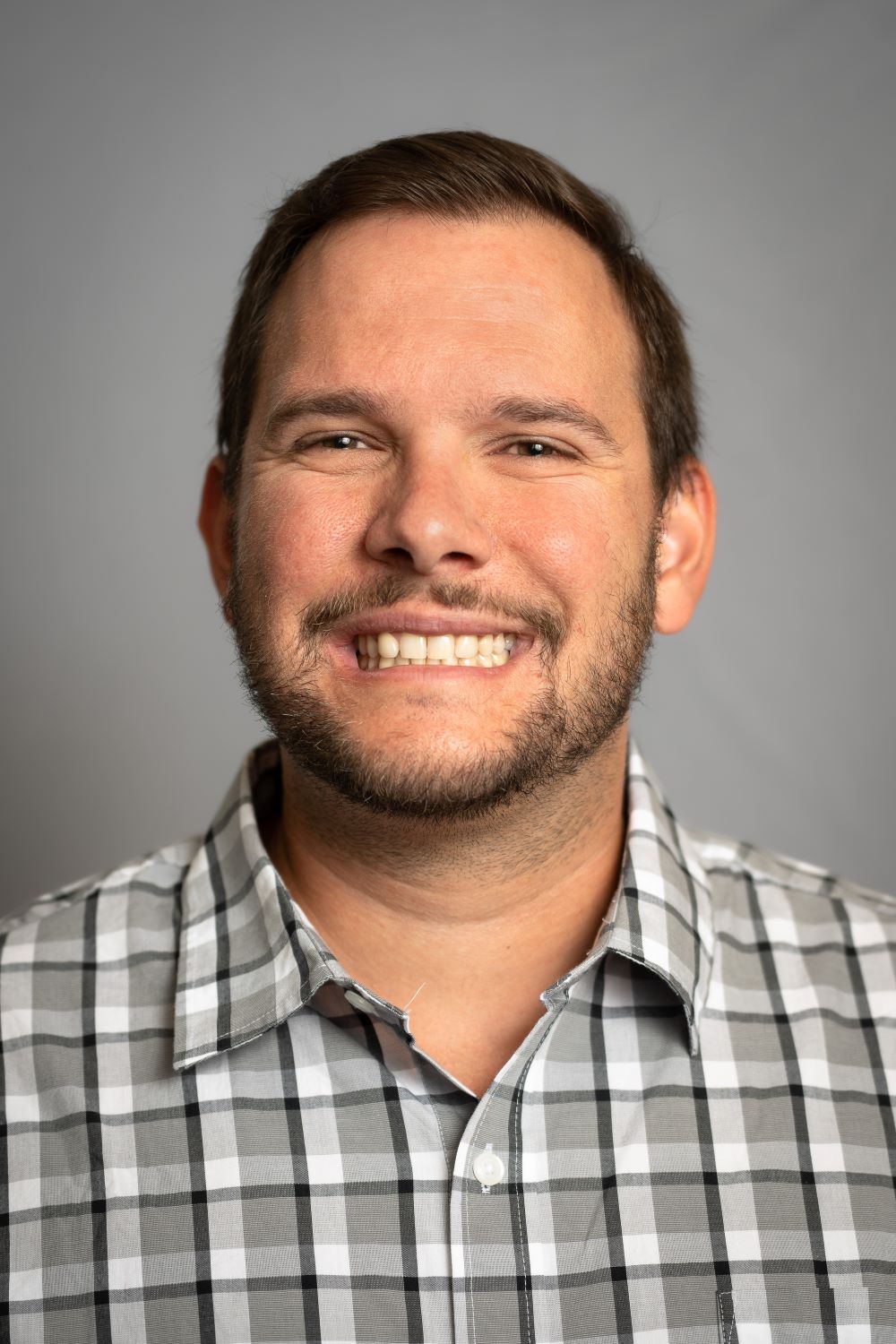
Assistant Professor
University of Utah
Abstract: Ion mobility spectrometry-mass spectrometry has emerged as an orthogonal and complementary analytical technique to liquid chromatography-tandem mass spectrometry in omics-based analyses. Carbohydrate-containing molecules, such as human milk oligosaccharides and glycolipids, are notoriously difficult to characterize, largely owing to their high degrees of isomeric heterogeneity. Thus, new analytical methodologies are required to improve the confidence of their characterization. In the first portion of this seminar, the use of cyclic ion mobility spectrometry-mass spectrometry (cIMS-MS) in conjunction with multiple tandem mass spectrometry-based strategies is presented as a new method toward the de novo sequencing of carbohydrate-based molecules. Recently, new insights from high-resolution ion mobility separations have revealed that mass distribution-based effects are responsible for the separation of isotopologues and isotopomers -- an observation which should be impossible based on existing theory. In the second portion of this seminar, the use of isotopic shifts to delineate amongst isomers and conformers will be discussed. Additionally, the development of both experimental and theoretical approaches to better understand the fundamental nature of mass distribution-based isotopic shifts will also be presented.
Organic Seminar
Wednesday, September 18, 3:30-4:30pm, NHB 1.720

Assistant Professor
University of Kansas
Abstract: In this talk I will provide several examples of photochemical reactions we used, or developed, to access a variety of structurally novel saturated heterocycles. Specifically, I will discuss our studies in the area of pyrrolinium photochemistry, the development of a Norrish-Yang reaction variant for accessing azetidines, the photochemical decarbonylation of small heterocycles which give ylides (which react with pi systems), and the photolysis of catecholato silicates. The discussion will feature quantitative measurements (EPR, transient absorption spectroscopy, kinetcs) and models that aided and guided our development of described methods. Brief summary: Excite. Twist. Cleave. Several examples of photochemical reactions, mechanisms, and models… with an aim of reaching new chemical space.
Welch Emerging Leaders in Chemistry Visitor Series
Wednesday, September 18, 3:30-4:30pm, WEL 2.122
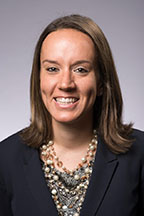
Associate Professor
University of Rochester
Abstract: The chemical and electronic interactions between actinide ions and redox active surfaces is an important area of research, with implications in the front- and back-end processing of nuclear fuels. In this context, group(VI) chalcogenide materials demonstrate potential for selectively extracting uranium from seawater as a result of enhanced electronic communication between actinide and the redox-active surfaces. Motivated by these results, our research group is investigating the synthesis of actinide-substituted molybdenum chalcogenide clusters. The first part of this talk will describe the use of a preformed lacunary, Lindqvist-type, polyoxomolybdate-alkoxide cluster. We are able to generate the first examples of actinide-polyoxomolybdate sandwich complexes, (TBA)2[An{Mo5O13(OMe)4NO}2] (An = Th, U), isolated under non-aqueous conditions. Oxidation of the uranium containing sandwich complex (TBA)2[U{Mo5O13(OMe)4NO}2], chemically or electrochemically, allows facile access to the U(V) centered species, which was characterized both spectroscopically and by single crystal X-ray diffraction. Subsequently, this talk will further describe recent findings from our group summarizing the use of a redox-active metalloligand, (Cp*₃Mo₃S₄), which serves as a single binding site for actinides. The compound of interest, (Cp*3Mo3S4)Cp*UI2, offers valuable insights into the unique interactions between actinide species and redox-active surfaces. Most notably, this cluster is found to serve as an effective model system for considering the mechanisms of small molecule activation by low-valent single atom uranium catalysts at MoS2 surfaces.
Organic Seminar
Monday, September 16, 3:30-4:30pm, WEL 2.122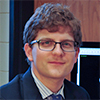
Associate Professor
Purdue University
Abstract: Peptide-based therapeutics are increasingly emerging as a fundamental component of the pharmaceutical landscape. Similar to antibodies, peptides possess the remarkable ability to target protein-protein interactions, thereby achieving therapeutic efficacy in areas where small-molecule drug candidates often face limitations. Additionally, peptides offer several key advantages: they metabolize into predominantly harmless amino acids, typically provoke minimal immune responses, and can be synthesized in a modular fashion, enabling the creation of diverse peptide libraries with relative ease. However, peptides still encounter notable challenges, including limited stability against proteolytic degradation and inefficiency in traversing cell membranes. These hurdles have impeded the intracellular targeting potential of peptides and constrained the development of orally administered peptide-based medications. To address these challenges, the Schneebeli laboratory is pioneering a blend of experimental and computational approaches, harnessing supramolecular-chemistry-enabled sequencing and constant pH molecular dynamics simulations to design and select peptide sequences that not only recognize their target proteins but also exhibit enhanced stability and improved biodistribution properties. This seminar will provide a comprehensive overview of our integrated computational and experimental tools, which are designed to enable precise mechanistic studies on the membrane permeation of peptide drugs in the presence of permeation enhancers. Furthermore, it will outline a detailed roadmap for leveraging our supramolecular tools for next-generation sequencing and high throughput selection of pharmaceutical peptide and protein libraries.
W. Albert Noyes, Jr. Distinguished Visiting Lectureship
Thursday, September 12, 3:30-4:30pm, WEL 2.122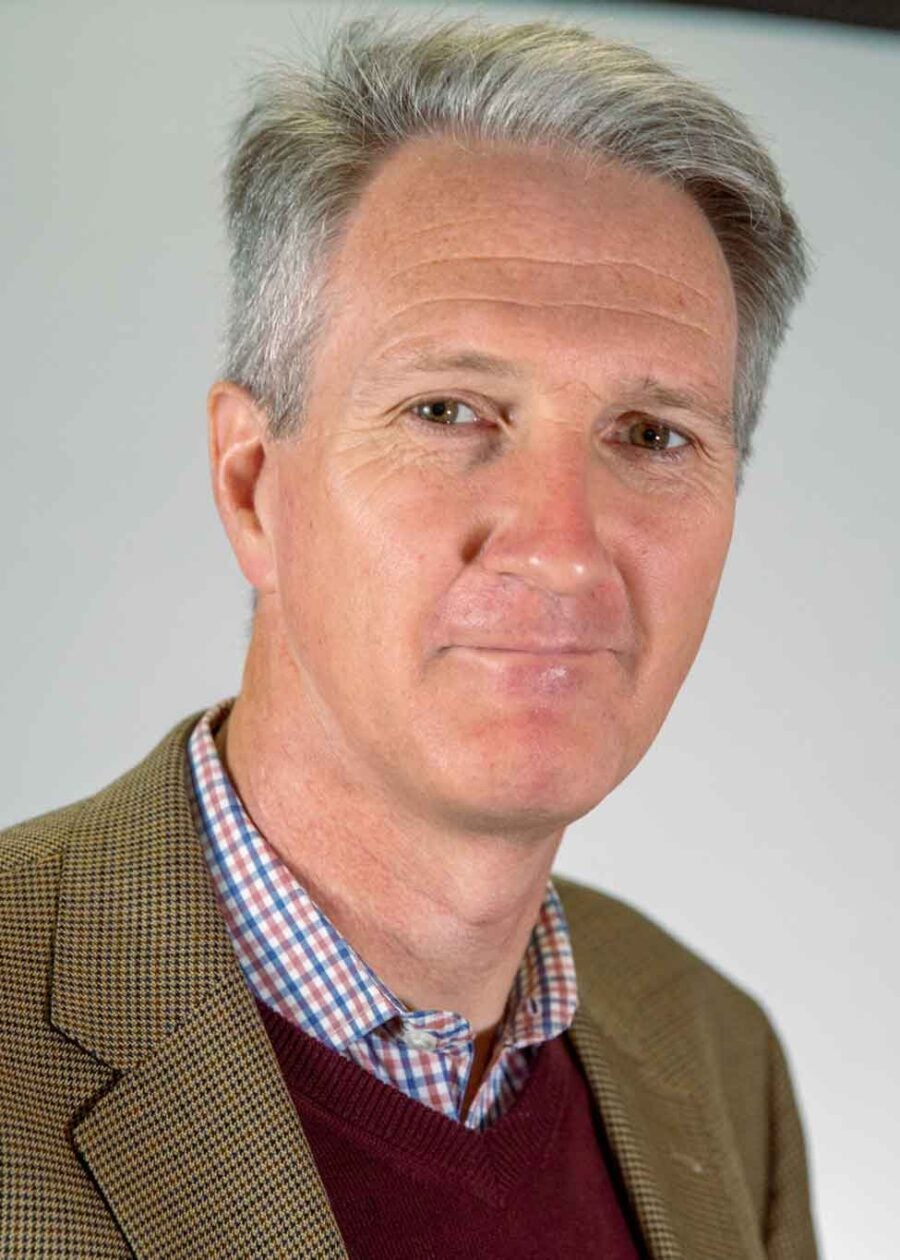
Professor
University of Southern California
Abstract: Intermolecular interactions in liquids often control electronic structure, and therefore reactivity and excited state dynamics, but these interactions are complex to quantify. Experiments are required to challenge the latest theoretical approaches. Liquid microjet photoelectron spectroscopy has emerged as a powerful approach to access solvent and solute electronic structure - both in the liquid and at the gas-liquid interface. Using steady-state photoelectron spectroscopy, we have investigated anion intermediates in solvents relevant to chemical synthesis connecting information recovered to redox potential. Time-resolved experiments aim to explore photochemical reactivity differences “on” and “in” water. In solar energy conversion, one approach to photocatalysis is to design photosensitizers for the ability to efficiently deliver charges at high redox potential to a separate electrocatalyst. Our group has applied fs-to-ms transient absorption, at high throughput, to understand mechanisms in thermally assisted delayed fluorescent (TADF) complexes designed to have long enough triplet lifetimes to reduce electrocatalysts for hydrogen generation.
Inorganic Seminar
Wednesday, September 11, 3:30-4:30pm, WEL 2.122
Assistant Professor
UC Berkeley
Abstract: The aerobic oxidation of carbon-hydrogen (C-H) bonds in biology is currently known to be accomplished by a limited set of cofactors that largely include heme, nonheme iron, and copper. While manganese cofactors perform difficult oxidation reactions, including water oxidation within Photosystem II, they are generally not known to be used for C-H bond oxidation, and those that do catalyze this important reaction display highly limited intrinsic reactivity. In this seminar, I will describe a handful of homologous enzymes that either require manganese, iron, or mixtures thereof to functionalize strong, aliphatic C-H bonds (BDE = 100 kcal/mol). Structural and spectroscopic studies on these systems reveal redox-active, bimetallic active sites that represent the locus of O2 activation and substrate coordination. Our combined results dramatically expand the known reactivity of biological manganese-containing cofactors, and suggests that many uncharacterized (or mischaracterized) monooxygenases may similarly utilize manganese to perform crucial oxidative biochemical tasks.
Organic Seminar
Friday, September 6, 3:30-4:30pm, WEL 2.122
Assistant Professor
New York University
Abstract: Our planet is inhabited by trillions of bacteria that live inside and outside of humans. The “skin”, or surface, of bacteria is called the cell envelope, which mediates infection of the host and protects bacteria from host immune defense tactics. While Gram-negative bacteria contain a protective outer membrane layer absent in most Gram-positives, almost all bacteria contain polymers composed of unique monosaccharides that extend from the cell surface. Gram-negative bacteria typically contain lipopolysaccharide (LPS) in the outer leaflet of the outer membrane with attached polysaccharides called O- antigens that help mediate interactions with the environment. O-antigens are composed of repeating oligosaccharides that define particular bacterial serotypes, which distinguishes bacterial strains within a single species. Foundational chemical biology work has contributed to our understanding of eukaryotic cell surface composition. However, we still lack a clear understanding of assembly of bacterial surface glycan polymers that contain prokaryote-specific or “rare” sugars. Here, we describe synthetic and chemoenzymatic methods to construct rare nucleotide sugars to study substrate recognition by bacterial glycosyltransferases that build O-antigens. We identify key regions in sugar substrates that are required for substrate binding and activity, and we use this knowledge to design chemical probes that will be used for the construction of synthetic O-antigens and small molecule inhibitors that will stall O-antigen synthesis. This work will expand our understanding of cellular mechanisms underlying bacterial polysaccharide synthesis, and will teach us about the roles that rare sugars play in bacterial cellular interactions.
Analytical & Physical / ChemBio Seminar
Thursday, September 5, 3:30-4:30pm, WEL 2.122

Assistant Professor
McMaster University
Abstract: The development of biomolecules as therapeutics is hindered by their limited ability to enter cells. Our group seeks to leverage the programmable assembly of nucleic acids and their accessible monodisperse synthesis to interrogate the mechanisms by which cells and living systems interact with nanoscale biomolecules to facilitate their delivery. The phosphate backbone of nucleic acids represents an ideal target since it contributes to the low cellular uptake of unmodified nucleic acids, and it is involved in the molecular recognition of nucleic acids for degradation by nucleases and the immune system. To achieve this, we are exploring chemical modifications to the phosphate backbone of nucleic acids, introducing new charge motifs in order to program their interactions with cells and living systems. We found that these chemical modifications enhance the cellular uptake of nucleic acid-based nanostructures and are currently investigating the mechanisms involved in recognition and uptake, along with the possibility of using them as therapeutics for nucleic acid and glycan delivery.
Analytical & Physical Seminar
Thursday, August 29, 3:30-4:30pm, WEL 2.122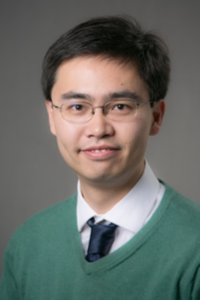
Associate Professor
Lehigh University
Abstract: Spectroscopy and microscopy with optical detection of photons have been the pillars of chemistry toolsets to study molecules and materials. However, traditional optically detected spectroscopy and microscopy are bound by Abbe’s diffraction limit on their spatial resolution. Nanometer-scale features—nano-phase separation in heterogeneous materials, clusters of nanostructures, and interfaces across material domains—are not directly resolvable in situ by linear or nonlinear visible or infrared spectroscopy. In this talk, I will present a different route of spectroscopy and microscopy that is intrinsically not bound by the diffraction limit. A sharp atomic force microscope (AFM) tip mechanically detects the photothermal response of the sample after light-matter interaction. In 2017, we invented a type of AFM-based photothermal microscopy, peak force infrared (PFIR) microscopy, that delivers ~6 nm spatial resolution. Over the past seven years, we have continuously developed the technique to enhance its signal strength and convenience of use and extend it into the aqueous phase for biological applications. We have demonstrated the PFIR on structured polymer surfaces, oil shale source rock, cell surfaces, field-collected outdoor and indoor aerosols, and perovskite photovoltaics. Recently, we have integrated PFIR microscopy with the time-domain two-dimensional infrared (2DIR) technique to bypass the diffraction limit for 2DIR. Using this new tool, we revealed the anharmonicity of vibrational modes through photothermal signals and deciphered the energy transfer pathway of hyperbolic polariton modes in hexagonal boron nitride. In the second part of this presentation, I will present the invention of the pulsed force Kelvin probe force microscopy (PF-KPFM) that delivers <10 nm spatial resolution of samples’ surface potential under ambient conditions. I will discuss its novelty over existing commercially available Kelvin probe force microscopy and present its applications to reveal spatial charge layers and local accumulation of charges on amyloid fibrils, 2D materials, and perovskite photovoltaics.
Department Tenure Seminar
Monday, August 26, 3:30-4:30pm, WEL 2.122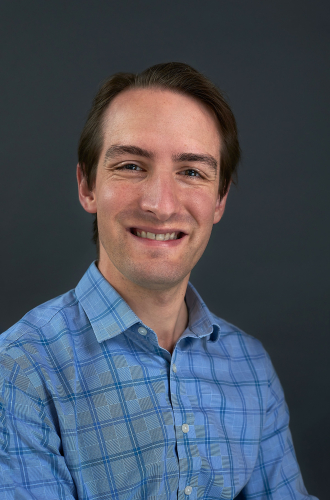
Assistant Professor
UT Austin Dept. of Chemistry
Abstract: Light as an energy source has enabled transformative technologies in imaging, lithography, adhesives, and 3D printing. Its broad utility arises from the unparalleled spatiotemporal control over chemical transformations that it offers. However, contemporary methods rely on high energy UV light (<400 nm), which limits material compatibility due to pervasive degradation and attenuation that occurs upon non-selective absorption and/or scattering. Excitingly, the recent commercialization of inexpensive light emitting diodes has opened an avenue to examine mild visible-to-near infrared induced reactions in materials chemistry. This presentation will focus on how the Page Research Group has developed and leveraged low energy light driven polymerizations to generate a versatile array of soft materials with unprecedented speed and spatiotemporal precision. Specifically, catalyst design principles to enable rapid solidification of photopolymer resins using visible-to-near infrared light will be discussed, along with their utility and optimization in high resolution additive manufacturing towards all-polymer multimaterial composites.
The Chemistry Guest Seminars site is no longer being updated. Please visit the Chemistry Department Events calendar for current information on upcoming seminars. This page will remain accessible as an archive of past seminar speakers.

This work is licensed under a Creative Commons Attribution-NonCommercial 4.0 Generic License.